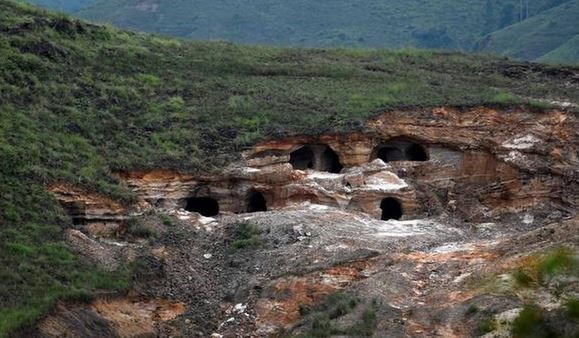Description

Disclaimer: Copyright infringement not intended.
Context
In the context of the Uttarakhand tunnel collapse and the rescue operation, the term "rat-hole mining" seems to be used metaphorically or as an analogy to describe a method of manually digging through the remaining debris obstructing the tunnel exit where workers are trapped.
Details
- Rat-hole mining is a technique primarily used for extracting coal from narrow, horizontal seams.
- However, it's essential to highlight that the term "rat hole" mining typically refers to the unregulated and hazardous coal mining method prevalent in the northeastern state of Meghalaya in India.
Characteristics of Rat-hole Mining
- Narrow, Horizontal Seams: Rat-hole mining involves extracting coal from thin, horizontal seams, which are prevalent in Meghalaya. These seams are often less than 2 meters in thickness.
- Primitive Extraction Techniques: Miners typically create narrow pits (referred to as "rat holes") into the ground, allowing only one person at a time to descend and extract coal using basic tools such as pickaxes, shovels, and baskets.
- Two Main Types of Rat-hole Mining:
- Side-cutting Procedure: Miners dig narrow tunnels on hill slopes until they reach the coal seam due to the thin nature of the seam.
- Box-cutting Procedure: Involves creating a larger rectangular opening, followed by digging a vertical pit through which miners access the coal seam by creating rat-hole-sized tunnels horizontally.

Environmental and Safety Concerns
- Lack of Regulation: Rat-hole mining operations are typically unregulated and lack safety measures, including proper ventilation, structural support, and safety gear for workers.
- Environmental Damage: This mining method leads to land degradation, deforestation, and water pollution, impacting the surrounding environment significantly.
- Safety Hazards: Hazardous working conditions often lead to accidents, injuries, and fatalities among miners.
Legal Status
- Banning of Practice: The National Green Tribunal (NGT) banned rat-hole mining in 2014 and reaffirmed the ban in 2015 due to safety concerns and environmental degradation associated with the practice.
- Resistance and Legal Challenges: Despite the ban, the practice persisted in some areas, leading to legal challenges and appeals by state governments, notably in Meghalaya, where rat-hole mining was prevalent.
.jpg)
Conclusion
It's important to note that this rescue technique might not strictly adhere to the traditional coal extraction process associated with rat-hole mining and is adapted for rescue efforts.
|
PRACTICE QUESTION
Q. Explain the concept of 'rat-hole mining' prevalent in Meghalaya and its association with unregulated coal extraction practices. Discuss the environmental and safety concerns associated with this method. (250 Words)
|
















